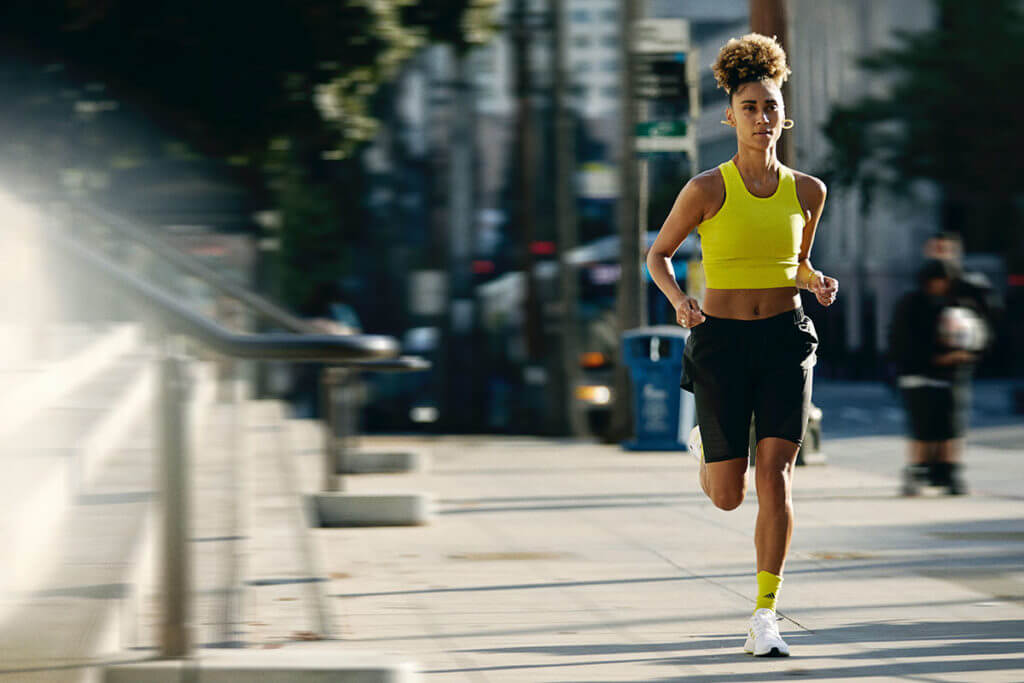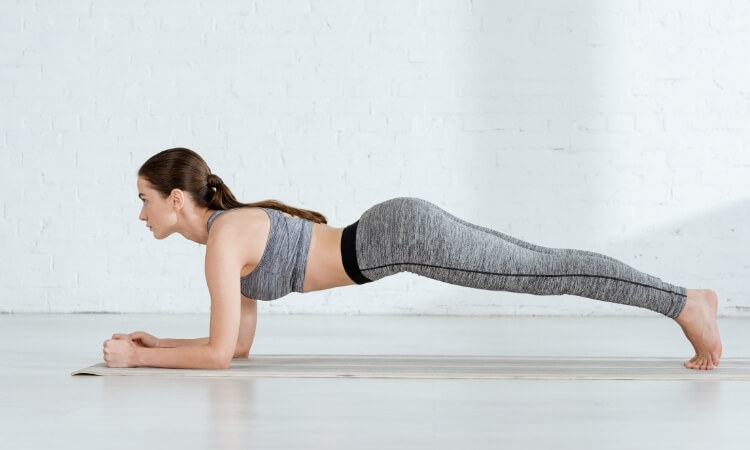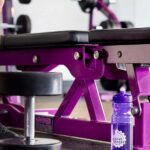Lucie, 31, is a runner who suffers from urinary incontinence. She has been a runner since seven years. She is ashamed of her bladder leakage and does not want to tell anyone. She wears a protection to prevent wetting her underwear. We want to remove the stigma surrounding this issue and help Lucie, and others who suffer from it.
Although bladder leakage can be annoying, it should not stop women or men from training and running regularly. While urinary incontinence is a condition that can affect both men and women, it’s more common for women to experience the problem at some point. We’re here to focus on the bladder leakage of women. We’ve broken the problem down and found some simple solutions.
What is bladder leakage?
The condition is medically called “Stress Urinary Incontinence”. It describes an involuntary leakage of the bladder. It can be triggered by an energetic lifestyle such as running, but it can also happen when you cough, sneeze or laugh too loudly. SUI is often completely unexpected, as it has no warning signs.
What causes bladder leakage?
SUI is a condition where the bladder pressure increases beyond your internal capacity when you exercise.
Imagine an inflated ballon that is held shut by a piece wrapped around the opening. The balloon will become too inflated and the string will untie itself, releasing the air.
Gravity can create vertical pressure at the perineum for women who run. This can lead to leakage.
It’s crucial that you balance your abdominal exercises with those designed to strengthen your perineal muscles and pelvic floor. Bladder leakage is a common problem for female athletes. Those who concentrate more on abdominal muscle strength than perineal muscle strength are more susceptible to this condition.
Stress Urinary Incontinence : primary risk factors
Age: People older than 65 are at a higher risk of developing SUI.
Body Mass Index (BMI): A high BMI has been identified as a risk factor in the development of SUI. (1)
SUI is linked to trauma during childbirth. (2)
Exercise type and risk of incontinence for women
The level of incontinence among female athletes is dependent on the type of physical activity. Here’s a list of sports that are divided by risk level:
High Risk Sports
Running
Gymnastics – Acrobatics
Aerobics
Hurdling
Basketball
Volleyball
Handball
Martial arts
Moderate-risk sports
Tennis
Badminton
Skiing
Low-risk sports
Walking
Swimming
Biking
Roller skating
You can also find out more about Golf
How to Manage Incontinence While Running
Use bladder control tampons to prevent small leakages while you run. You may not need anything else to prevent any leakage while out on an adventure.
It’s good to know
The bladder control tampon may not be what you think it is. It’s not necessary to insert anything in your urethra. This tampon expands when inserted in the vagina to support the bladder and prevent urine leakage.
It’s crucial to find the cause of urinary incontinence if you suffer from it regularly. Let’s not look for temporary solutions, but instead, learn some techniques to improve bladder control so that you can run.
- Perineal Rehabilitation
Perineal muscles are the focus of this exercise. These muscles can be strengthened and toned by performing exercises that target them. This helps to prevent SUI.
You can perform this exercise at home by lying on your back with your knees bent and your feet flat on the ground. Tuck your stomach in, exhale, and then contract the perineum, as if you were trying to stop the urge to urinate. Hold the contraction in place for 10 seconds. Release the contraction after 20 seconds. Repeat this 10 times.
- Abdominal strengthening
Perineal training and abdominal exercises are essential. Abdominal pressure is a major cause of urinary incontinence among athletes.
Avoid abdominal “crunches”. If the shoulders are brought towards the pelvis it can increase intra-abdominal tension, which increases the risk of leakage.
Strengthening the transverse abdominal muscle is a way to reduce excessive abdominal pressure. This will result in less bladder leakage among female athletes. Planks can be performed by athletes in ventral, dorsal or lateral positions. The exercises can be done in a static or dynamic manner, making them more challenging and effective.
- Breathing exercises
You should work on your breathing to achieve a healthy balance between your diaphragm muscles and your abdominals. To achieve this, tuck your belly in when you breathe. You will get more from your workouts if you learn how to properly breathe while running or doing strength training. - Bladder leakage surgery
SUI can be treated surgically if all other methods fail. Consult your physician for the best treatment plan.
Let’s Talk About It
Urinary Stress Incontinence, a condition common among female athletes, is something that they should be able to openly discuss. Let’s end the taboo by sharing our experiences. It’s always a great idea to strengthen your pelvic floor muscle. So, remember that abdominal and perineal strengthening are essential. You can stop doing crunches because they will only make things worse.
About the Author:
Pauline Six, a sports physician at Running Care, is an expert in sports medicine. She is a specialist in rehabilitation (from the initial diagnosis to retraining) of athletes. Pauline is an avid runner. She competes in triathlons and long distance trail running.











